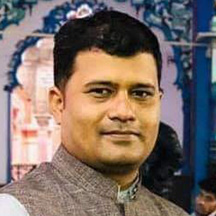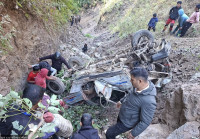National
Curbing drug abuse among youths in Dhanusa a challenge
Drug-related cases have doubled in the past three years. Police say they have intensified surveillance, but not much has changed.-by-Santosh-Singh.jpg&w=900&height=601)
Santosh Singh
Chandreshwore Mahato, 23, enrolled to study medicine because his parents forced him to. The pressure of the course took a toll on him, says Mahato—after all, it was not a subject he was interested in. As the days went by, Mahato, currently a second-year MBBS student, found solace in the sedative lull of Nitravet, a drug prohibited to use except when prescribed by a physician.
Mahato is a local of Umaprempur in Dhanushadham Municipality and had taken up rent in Kadam Chowk in Janakpur. On November 19, the police confiscated 1,500 files of Nitravet that he had hidden in packets of dalmoth and his shoes. Mahato was arrested and a case was filed against him at the Dhanusa District Police Office. In his court statement, Mahato said he started taking the drugs to cure his depression, and that he frequented clinics across the border to India to get the drugs.
Due to an open border with India, it’s easy for people to get hold of drugs that are banned in Nepal and that many youths from Dhanusha visit the bordering town of Harine to fetch drugs daily, say police. Even though the police have intensified surveillance, not much has changed, said Ranjit Tiwari, an inspector at Dhanusa District Police Office. A few times, however, the police have managed to arrest the abusers in coordination with Indian police, like in the case of Mahato. According to police, 86 percent of total drug abusers and traffickers are youths, between the ages of 20 and 30. “Most of those youths have little guidance from the family,” said Shekhar Khanal, superintendent of police in Dhanusha.
The district has seen a sudden rise in the number of people arrested on drug abuse charges in the past three years. Fifty-one people were charged in the fiscal year 2016-17, 81 in 2017-18, and 131 in 2018-19. Forty-eight people have been charged with drug abuse in the first four months of this fiscal year, according to police data.
Khanal said that the major cause of drug abuse among Dhanusha youths is proximity with the open border and easy availability of prohibited drugs across the border.
“Sixty percent of the inmates in jail are there for drug abuse,” he said. “But what is surprising is that the parents don’t want to believe their children are drug abusers.”
The relationship between drug abusers and traffickers is like “a metal chain”, said Milan Poudel, who operates a rehabilitation centre in Janakpur. “It’s difficult to break this chain. It’s a vicious circle,” he said. “The cause of 70 percent addictions is peer pressure. Sixty-five percent of traffickers also use some or the other form of drugs.”
Poudel added that Janakpur is becoming a “transit” for drug trafficking. “Nepalis traffic marijuana to India and they bring back tablets and injections. Those who get arrested are ‘small fish’, those low in the racket’s hierarchy. The main people who engage in the transactions get away easily.”
Gyanendra Yadav, Province 2 minister for law and internal affairs, said the government is preparing to “intensify surveillance” on the youths, declaring ‘addiction-free’ zones.
“A total of 36 police posts will be added as part of the campaign,” Yadav said. “We are in conversation with the Indian side as well. We are preparing a ban on alcohol within the one-and-a-half kilometre radius in both towns on the border.”
Yadav added that the police will be provided with modern security equipment, one of which will have the ability to detect if anyone has used drugs within five minutes. “Controlling widespread drug abuse is our priority,” said the minister. “We will raise awareness, formulate new laws, and rehabilitate the addicted.”
Despite the minister’s vow, it’s challenging to curb the widespread problem, said Raj Kishore Karna, who runs Relief Nepal Rehabilitation Centre in Janakpur. Many youths may get treatment at the centres but it’s hard for them to return to their normal selves, he said.
“If the society treats them bad once they come out of treatment, they might turn back to addiction,” said Karna. “If it is to be curbed, there has to be a bigger effort from the family, community and the state.”




 9.12°C Kathmandu
9.12°C Kathmandu















